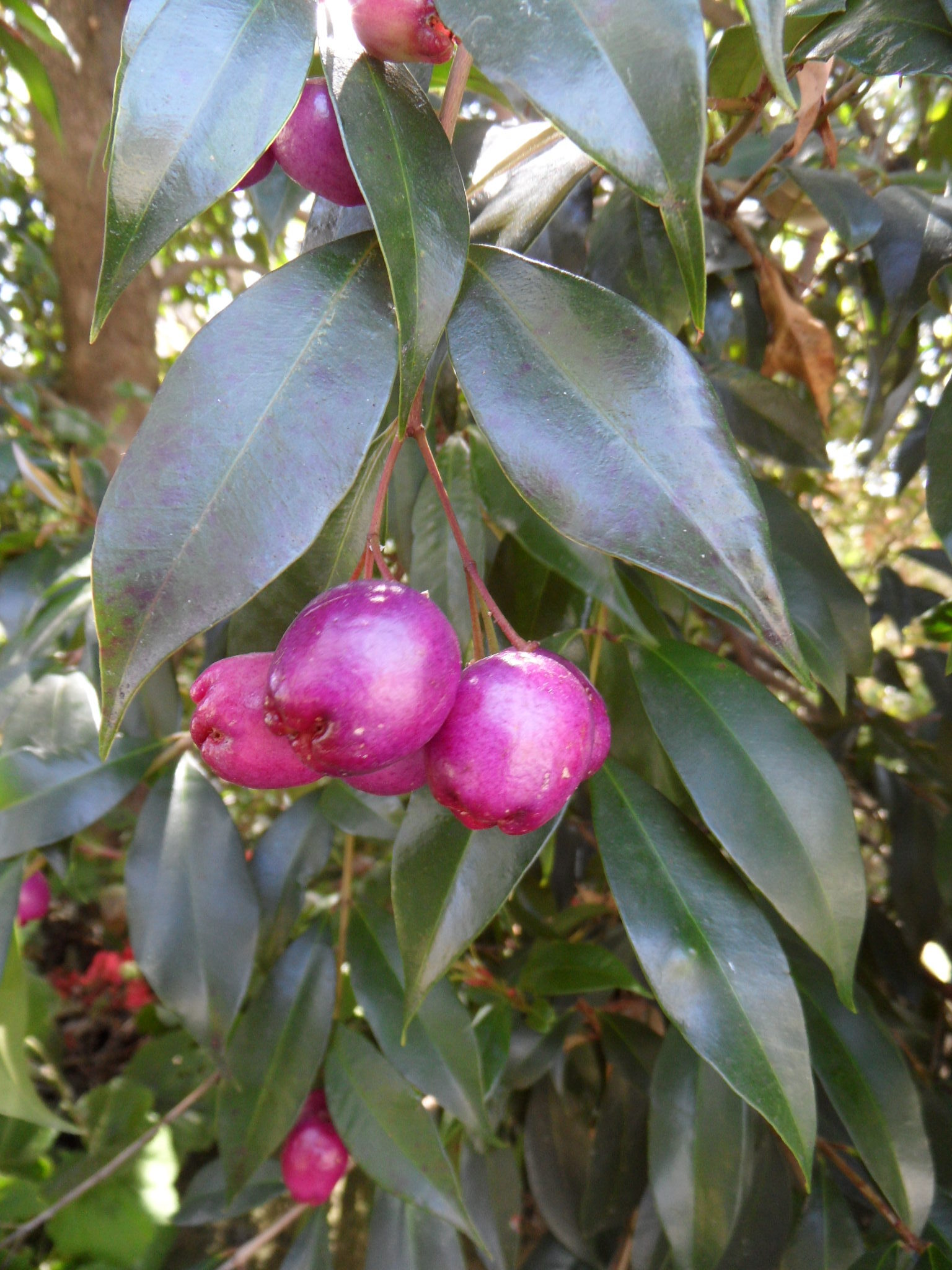
A tree to about 15 m tall but mostly much smaller. Leaves with stalk 3-6 mm long, lanceolate to slightly obovate, acuminate, mostly 5-9 cm long, 1.5-2.5 cm wide with 12-19 pairs of main veins, midrib sunken on upper surface. Flower clusters terminal. Fruits globular to ovoid, varying in colour from white through red to deep purple, mostly 1.5-2.5 cm wide, calyx lobes persistent, swollen, and bent inwards; splitting into 2-8 seeds when squeezed (polyembryonic).
A tree of sandy soil and stabilised sand dunes of coastal areas of NSW between Bulahdelah and Jervis Bay.
Widely cultivated as an ornamental in E Australia for the dense foliage, flowers and unusual fleshy, colourful fruits. Also grown in California.
S. 'Lillyput' is a dense, compact shrub with smallish leaves and tending to develop a broad, rounded habit. A chance seedling selected by Terrance and Carmel Hennessey, Qld. PVJ 6(4)53.
S. 'Undercover' is a small prostrate spreading bush with purplish new growth. A spontaneous sport selected by Rex Trimble,Vic. PVJ 11(1)63.
NSW.
Fruits edible and used for preserves.
Leaves with veins indistinct, midrib sunken; fleshy calyx lobes closed inwards on globular to ovoid fruit; seeds fragmenting when squeezed.
VIC: Caulfield (Park); Essendon (Queens Park); Kew (Boroondara Cemetery); Malvern ('Stonnington'); Melbourne (Royal Bot. Gds, Observatory Gate, Observatory House path).
Source: (2002). Myrtaceae. In: . Horticultural Flora of South-eastern Australia. Volume 3. Flowering plants. Dicotyledons. Part 2. The identification of garden and cultivated plants. University of New South Wales Press.
